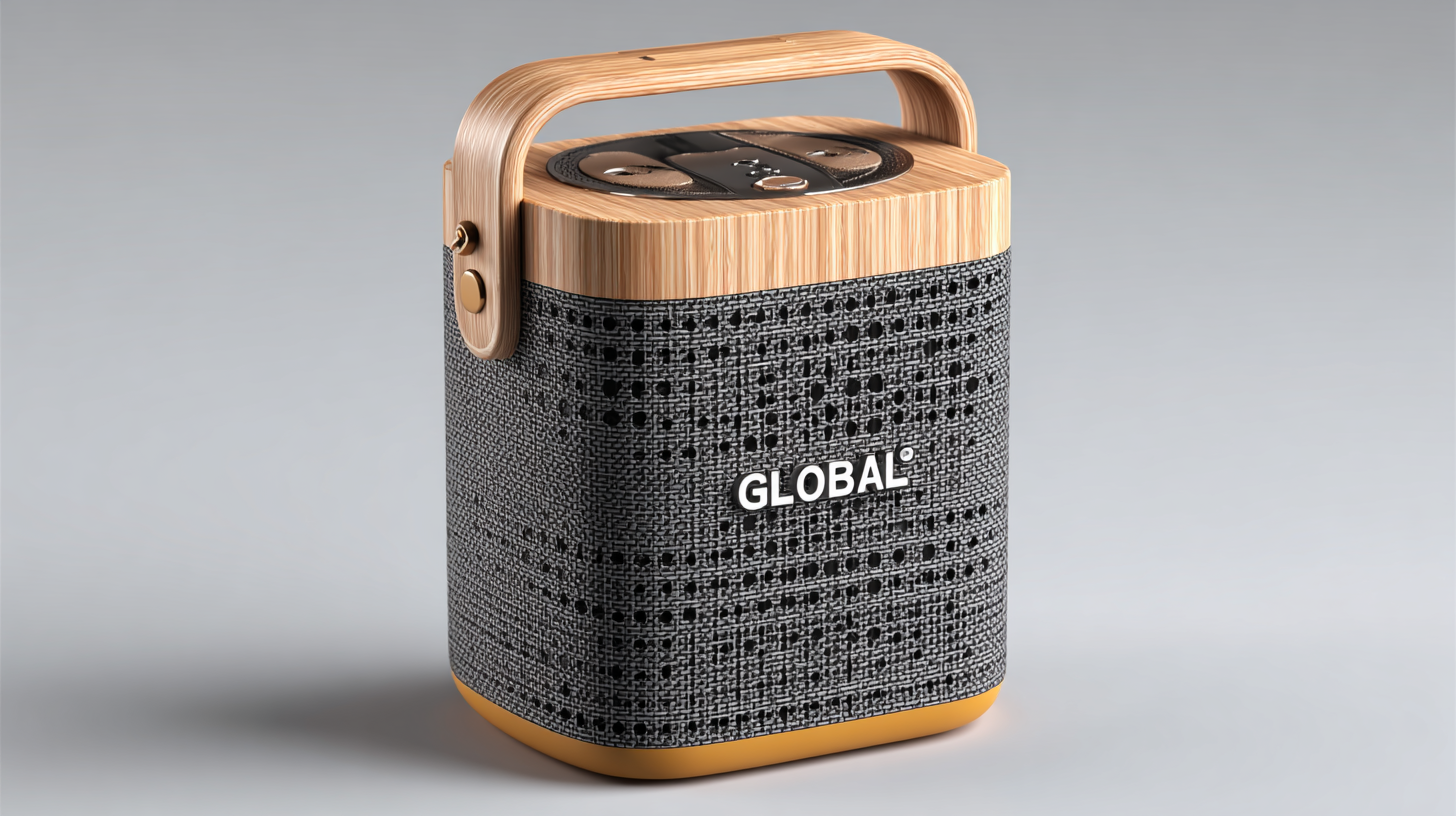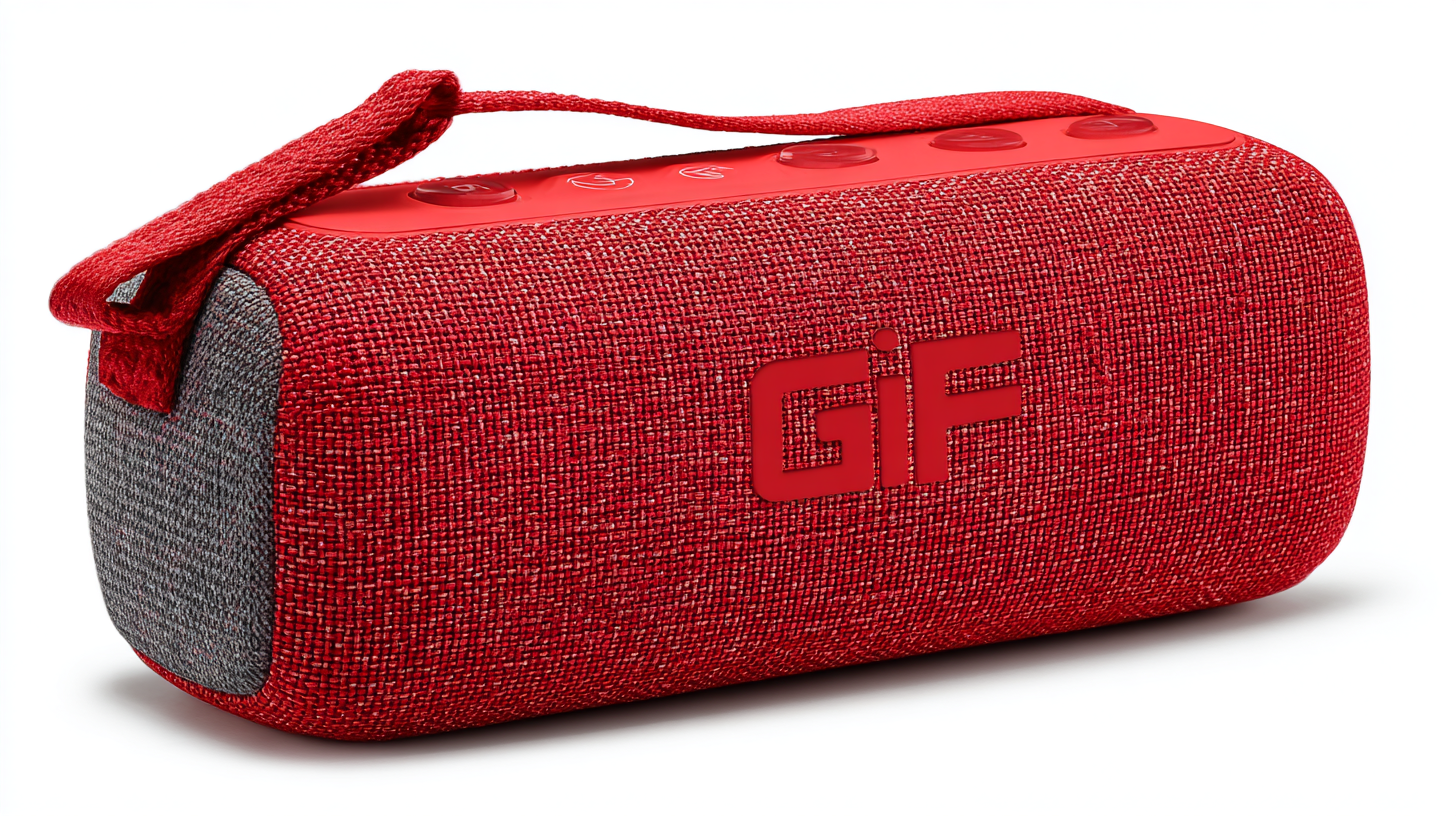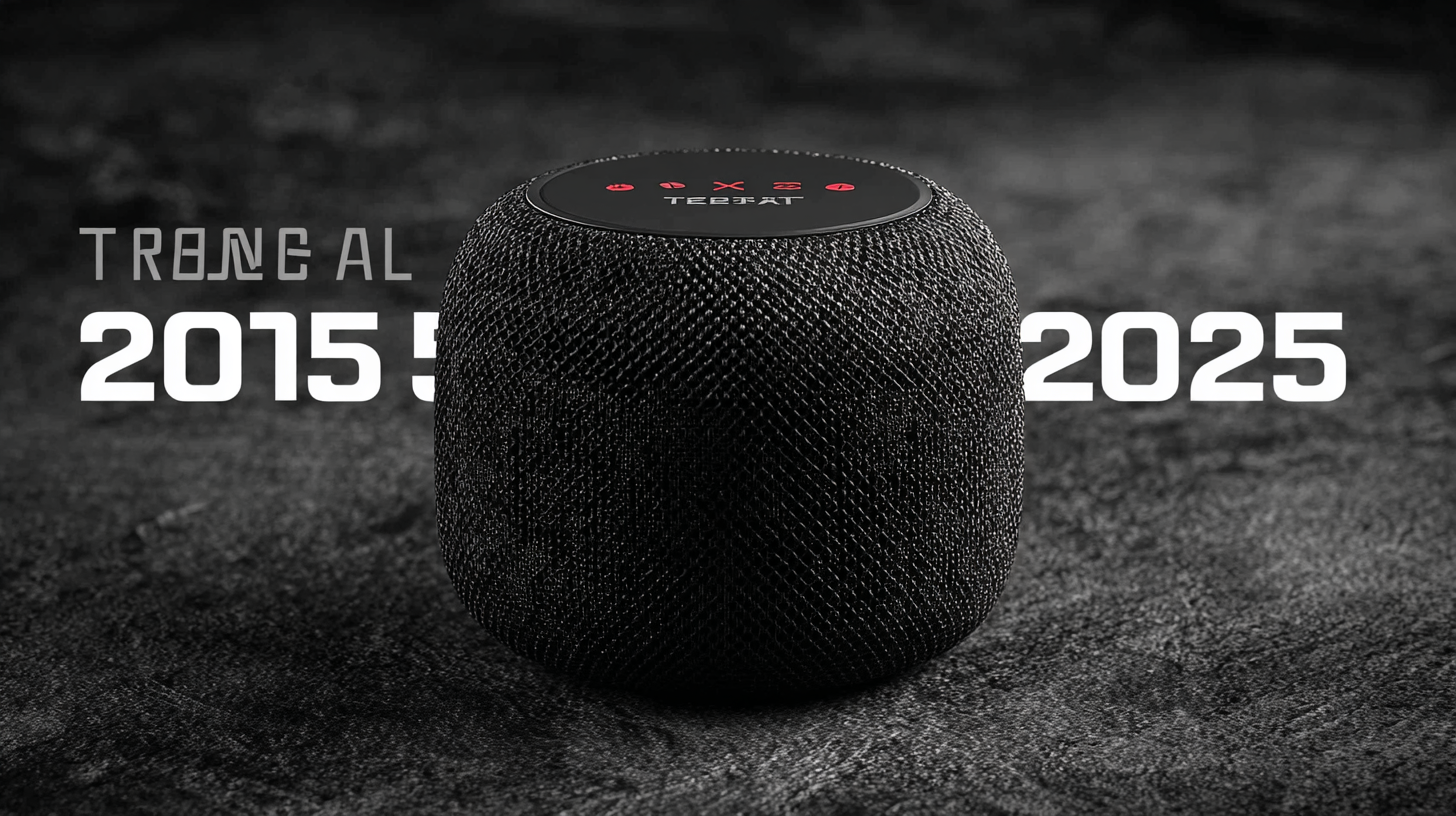In an era where mobility and connectivity are paramount, the demand for Portable Bluetooth Speakers continues to soar, with a projected CAGR of around 12% from 2020 to 2025, reaching a market value of approximately $10 billion by 2025, according to a recent industry report. This growth is largely driven by an increase in consumer preference for outdoor portable audio solutions and advancements in technology that enhance sound quality and battery life. Furthermore, the global market for these speakers is heavily influenced by the reputation of manufacturers, particularly those relying on the trusted reliability of Chinese manufacturing, which consistently delivers products that embody quality and performance.

As we delve into the evolving landscape of Portable Bluetooth Speakers, it is essential to examine real-world examples and trends that are shaping consumer choices and technological innovations in this vibrant sector.
As we look ahead to 2025, the design of portable Bluetooth speakers is undergoing significant transformations influenced by technological advancements and consumer preferences. One of the most notable trends is the integration of sustainable materials in speaker construction. Manufacturers are increasingly prioritizing eco-friendly designs that utilize recycled plastics, biodegradable materials, and renewable resources. This shift not only appeals to environmentally conscious consumers but also underscores a broader commitment to reducing carbon footprints in the tech industry.
Another emerging trend is the enhancement of sound quality through innovative engineering. In 2025, we can expect portable Bluetooth speakers to feature advanced acoustic technologies, such as spatial audio and dynamic equalization. These enhancements deliver a more immersive listening experience, allowing users to enjoy their favorite music as intended by the artists. Furthermore, advancements in battery technology will enable longer playback times without compromising on sound quality, making these speakers ideal companions for outings and travel.
Smart features are also set to redefine portable Bluetooth speakers. As voice assistant technology continues to evolve, we will see speakers that seamlessly integrate with smart home ecosystems, allowing users to control their devices with simple voice commands. In addition, the incorporation of AI-driven personalization will enhance user experience by tailoring sound profiles based on listening habits, ensuring that each session is uniquely suited to individual preferences.
 The influence of Chinese manufacturing on global Bluetooth speaker sales is profound and multifaceted. As one of the largest producers of electronic products, China has established itself as a dominant player in the Bluetooth speaker market.
Companies such as Xiaomi and Huawei have effectively tapped into the increasing consumer demand for portable audio devices, leveraging cost-effective production methods and innovative designs. This competitive advantage has enabled these brands to offer high-quality speakers at various price points, making them accessible to a broader audience.
The influence of Chinese manufacturing on global Bluetooth speaker sales is profound and multifaceted. As one of the largest producers of electronic products, China has established itself as a dominant player in the Bluetooth speaker market.
Companies such as Xiaomi and Huawei have effectively tapped into the increasing consumer demand for portable audio devices, leveraging cost-effective production methods and innovative designs. This competitive advantage has enabled these brands to offer high-quality speakers at various price points, making them accessible to a broader audience.
Moreover, the synergy between Chinese manufacturers and international tech firms is reshaping the landscape of wireless audio technology. Collaborative efforts often lead to rapid advancements in features such as sound quality, battery life, and connectivity options.
For example, the integration of advanced materials and smart technology has allowed brands to create speakers that are not only stylish but also versatile. As Western companies increasingly rely on Chinese production capabilities, we can expect to see a rise in both the diversity of products and the efficiency of their distribution in the global market.
In the ever-evolving market of portable Bluetooth speakers, quality assurance has become paramount. As consumers increasingly seek durable and reliable audio devices, manufacturers are focusing on robust testing protocols and materials. A comparative analysis of popular brands reveals that many are now employing rigorous quality checks to ensure their products can withstand the rigors of everyday use. For instance, leading brands are utilizing IP ratings to denote water and dust resistance, reassuring buyers about their investments.
Tip: When shopping for a Bluetooth speaker, pay close attention to user reviews regarding battery longevity and build quality. Many users often highlight whether the speaker can handle adverse conditions, which is valuable information for potential buyers.
Moreover, manufacturers are incorporating advanced technologies such as aptX and AAC codecs in their devices to enhance sound quality. This trend not only caters to audiophiles but also elevates the overall listening experience for the average consumer. Real-world examples from the likes of JBL and Bose demonstrate how maintaining high standards in audio performance bolsters a brand's reputation.
Tip: Always look for speakers that offer features like customizable EQ settings, as this can significantly improve your listening experience depending on the environment and type of music.

As we approach 2025, consumer preferences in the portable Bluetooth speaker market are evolving significantly. Recent market research indicates that 67% of buyers prioritize sound quality over other features, reflecting a growing demand for rich audio experiences even in compact devices. Additionally, durability and battery life are crucial, with 56% of consumers seeking speakers capable of withstanding outdoor conditions and delivering at least 10 hours of playtime. Brands that effectively balance these aspects are likely to gain a competitive edge.
Tips for consumers when choosing the best portable Bluetooth speakers include evaluating the speaker’s waterproof rating, especially for outdoor adventures. Look for models with at least an IPX7 rating to ensure they can withstand splashes and immersion. Furthermore, consider the integration of smart features; 42% of buyers are interested in voice assistant compatibility, reflecting a trend toward more interactive and convenient user experiences.
Another noteworthy preference is design aesthetics. According to a survey, 48% of consumers believe that the look and feel of a speaker are just as important as its technical specifications. Portable speakers with customizable colors or sleek, modern designs appeal more to style-conscious buyers. This shift towards personal expression indicates that manufacturers should invest in diverse designs to meet consumer expectations in 2025.
 In the realm of portable Bluetooth speakers, several brands have distinguished themselves through innovative design and exceptional performance. One notable success story is that of Bose, which has consistently captivated consumers with its high-quality sound and sleek aesthetic. The Bose SoundLink Revolve+ not only provides 360-degree audio but also boasts impressive battery life, making it a top choice for outdoor enthusiasts. Its durability and water-resistant feature have expanded its appeal, allowing music lovers to enjoy their favorite tunes in various environments, from beach outings to backyard gatherings.
In the realm of portable Bluetooth speakers, several brands have distinguished themselves through innovative design and exceptional performance. One notable success story is that of Bose, which has consistently captivated consumers with its high-quality sound and sleek aesthetic. The Bose SoundLink Revolve+ not only provides 360-degree audio but also boasts impressive battery life, making it a top choice for outdoor enthusiasts. Its durability and water-resistant feature have expanded its appeal, allowing music lovers to enjoy their favorite tunes in various environments, from beach outings to backyard gatherings.
 Another remarkable player in the Bluetooth market is JBL, known for its colorful and rugged speaker designs. The JBL Charge 5 exemplifies the brand's commitment to portability and power. With its built-in power bank, users can charge their devices on the go, making it a practical option for those who enjoy adventures. Moreover, JBL’s marketing strategies, including collaborations with artists and influencers, have resonated with younger consumers, positioning the brand as a trendsetter in the audio space. These real-world examples illustrate how leading brands successfully combine functionality, design, and marketing to capture and retain a loyal customer base.
Another remarkable player in the Bluetooth market is JBL, known for its colorful and rugged speaker designs. The JBL Charge 5 exemplifies the brand's commitment to portability and power. With its built-in power bank, users can charge their devices on the go, making it a practical option for those who enjoy adventures. Moreover, JBL’s marketing strategies, including collaborations with artists and influencers, have resonated with younger consumers, positioning the brand as a trendsetter in the audio space. These real-world examples illustrate how leading brands successfully combine functionality, design, and marketing to capture and retain a loyal customer base.
